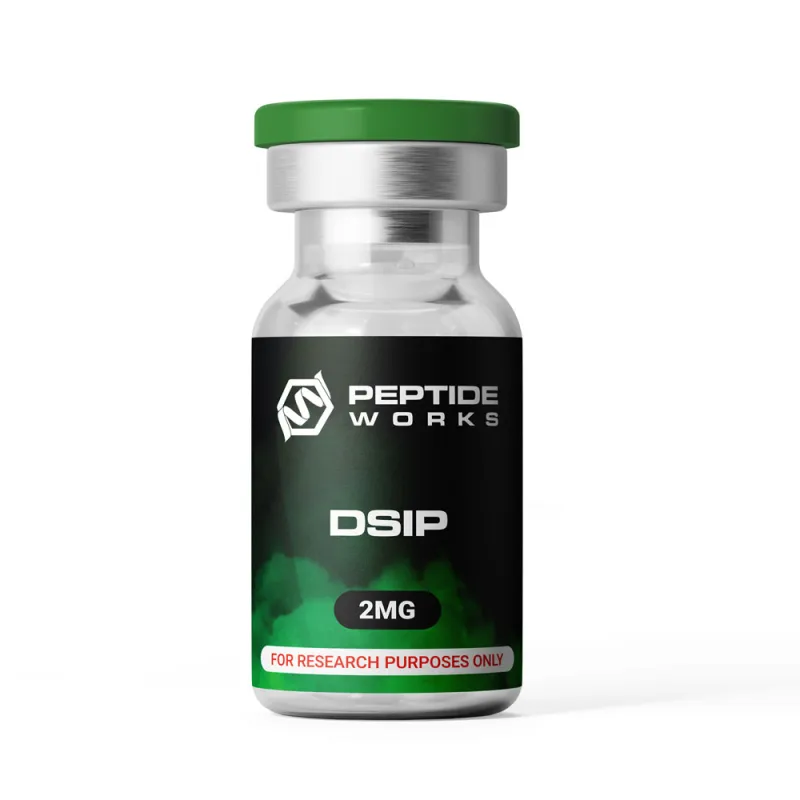
PROMO!
First order? Get 10% OFF with this code: 1storder
Written by

Waking up tired frustrates many people. Dragging through a full day with heavy eyes and slow focus makes work and daily tasks harder. Millions experience this type of daytime fatigue, and extra hours of sleep often fail to solve it. Instead of feeling refreshed, they continue to fight low energy and mental fog.
Researchers now study the Orexin A peptide to understand this problem. This peptide acts as a natural signal in the brain that drives wakefulness, alertness, and energy balance. When Orexin A activity drops, focus declines, and daytime sleepiness grows stronger. Scientists are exploring Orexin A because it may hold clues to easing fatigue and improving the brain’s energy management.
Understanding how this peptide influences energy is essential to see why it has become such a focus in fatigue research.
Explore Orexin A Peptide from Peptide Works, studied for its role in wakefulness, alertness, and energy balance linked to daytime fatigue.

Orexin A peptide works inside the hypothalamus, a brain region that manages sleep, hunger, and energy. Neurons that release Orexin A act like switches, sending signals that keep the body awake and active. These neurons also respond to metabolic cues such as glucose, leptin, and ghrelin, linking energy intake to alertness.
When Orexin A activates its receptors (OX1R and OX2R), the brain raises arousal, motivation, and energy use. By directly tying fuel signals to alertness, Orexin A acts as a bridge between energy balance and mental focus.
Since energy and mental focus are closely linked, researchers also look at how Orexin A shapes the brain’s ability to stay awake and alert for longer periods.
Orexin A peptide acts as a driver of the brain’s wake circuits. Neurons that release Orexin A fire most during active hours and quiet down when the body shifts into sleep. This firing pattern helps set the rhythm that keeps the brain alert during the day.
Orexin A also links with brain chemicals such as dopamine, serotonin, and norepinephrine. These neurotransmitters control arousal, mood, and focus. By pushing these systems to stay active, Orexin A helps prevent sudden drops in alertness. Scientists view Orexin A as a core signal that supports long periods of wakefulness and attention.
Maintaining wakefulness also means keeping concentration sharp, which is why studies have examined how Orexin A connects with attention networks in the brain.

Orexin A peptide helps the brain stay focused by boosting activity in the prefrontal cortex, the area linked to decision-making and concentration. When orexin neurons fire, they release signals that strengthen attention networks. Studies in animals have shown that adding orexin to this region improves performance in tasks that require sustained attention and focus.
Orexin A also works with neurotransmitters like dopamine and norepinephrine, which keep the brain alert and ready to respond. By supporting these systems, orexin helps the brain filter distractions and maintain attention during demanding tasks. This role in sharpening focus makes orexin more than a wake signal; it also acts as a cognitive enhancer in research models.
The importance of Orexin A becomes even clearer when its absence leads to fatigue and, in more severe cases, excessive sleepiness.
When Orexin A signaling in the brain decreases, the wake system becomes weaker. This often shows up as daytime fatigue, low energy, mental fog, and poor focus, even after adequate rest. The brain struggles to maintain alertness, and daily tasks become increasingly difficult to manage.
A more severe outcome is excessive daytime sleepiness (EDS). Unlike general fatigue, EDS brings overwhelming drowsiness, slow reactions, and, in some cases, sudden sleep episodes. Research with Orexin A peptide highlights how this neurochemical regulates the balance between sleep and wakefulness. When activity falls too low, the system fails to maintain stability, leading to both fatigue and excessive sleepiness.
One of the most striking examples of this disruption appears in narcolepsy, a condition closely tied to Orexin A deficiency.
Narcolepsy is one of the clearest examples of what happens when Orexin A levels fall too low. In this condition, the brain loses its ability to keep stable wake signals. This leads to excessive daytime sleepiness (EDS), sudden sleep episodes, and, in some cases, cataplexy a sudden loss of muscle tone triggered by emotions. Research shows that low Orexin A is a key marker in many narcolepsy cases.
Scientists also study other sleep peptides that may influence sleep patterns, such as DSIP (Delta Sleep-Inducing Peptide). DSIP has been linked to deep sleep stages in research, though findings are not always consistent. Alongside studies on Orexin A peptide, this research suggests that different peptides may influence both disrupted sleep and daytime fatigue.
Discover DSIP Peptide at Peptide Works, a peptide of interest for its potential connection to deep sleep, recovery, and restorative rest.
To understand how they differ, it helps to look at Orexin A and DSIP side by side.

Orexin A peptide acts as a wake-promoting signal in the brain. It regulates alertness, focus, and energy balance by activating orexin receptors (OX1R and OX2R). Low Orexin A is linked to excessive daytime sleepiness (EDS), narcolepsy, and persistent fatigue.
DSIP (Delta Sleep-Inducing Peptide), in contrast, has been explored mainly for its connection to deep sleep, delta wave activity, and recovery. Some studies suggest it may improve sleep quality, while others report inconsistent results. Unlike Orexin A, DSIP does not directly control wakefulness but may influence rest that supports daytime energy.
| Peptide | Primary Role | Research Link to Fatigue |
|---|---|---|
| Orexin A peptide | Wakefulness, energy regulation, focus | Strong link (low levels → fatigue, EDS, narcolepsy) |
| DSIP peptide | Deep sleep, recovery, delta wave activity | Indirect link (through sleep quality → daytime energy) |
These peptides reveal two unique roles, as Orexin A influences wake regulation and DSIP contributes to sleep depth and recovery.
With research uncovering new roles for these peptides, many scientists now look ahead to the potential future of Orexin A in managing fatigue.
The future of Orexin A peptide in research looks promising. Current studies highlight its vital role in wakefulness, focus, and energy balance. Low levels are strongly linked to fatigue, narcolepsy, and excessive daytime sleepiness. While Orexin A itself is not an approved treatment, ongoing research continues to explore how its pathways could inspire new ways to manage daytime tiredness.
As research moves forward, access to high-quality peptides is essential for continued discovery. At Peptide Works, we supply a wide range of research peptides, including Orexin A peptide and DSIP. We provide peptides to researchers worldwide, supporting laboratories and academic teams as they explore new frontiers in sleep, energy, and fatigue research.
All products discussed are supplied for research purposes only and are not intended for human use.
[1] Zajo KN, Fadel JR, Burk JA. Orexin A-induced enhancement of attentional processing in rats: role of basal forebrain neurons. Psychopharmacology (Berl). 2016 Feb;233(4):639-47.
[2] Thomaz TG, McBenedict B, Meireles DK, Farias GF, et al. Treatment of Narcolepsy Type 1 With Orexin: A Systematic Review. Cureus. 2024 Dec 31;16(12):e76692.
[3] Nixon JP, Kotz CM, Novak CM, Billington CJ, Teske JA. Neuropeptides controlling energy balance: orexins and neuromedins. Handb Exp Pharmacol. 2012;(209):77-109.
[4] Graf MV, Kastin AJ. Delta-sleep-inducing peptide (DSIP): a review. Neurosci Biobehav Rev. 1984 Spring;8(1):83-93.
[5] Kovalzon VM, Strekalova TV. Delta sleep-inducing peptide (DSIP): a still unresolved riddle. J Neurochem. 2006 Apr;97(2):303-9.
ALL CONTENT AND PRODUCT INFORMATION AVAILABLE ON THIS WEBSITE IS FOR EDUCATIONAL PURPOSES ONLY.
DISCLAIMER: These products are intended solely as a research chemical only. This classification allows for their use only for research development and laboratory studies. The information available on our Peptide Works website: https://peptide-works.com/ is provided for educational purposes only. These products are not for human or animal use or consumption in any manner. Handling of these products should be limited to suitably qualified professionals. They are not to be classified as a drug, food, cosmetic, or medicinal product and must not be mislabelled or used as such.
Peptide Works
Related Articles

How effective could Orexin Addiction Therapy be?
Have you ever wondered why some people find it so hard to stop addictive habits, even when they truly want

Can NAD Therapy Improve Cognitive Performance?
NAD Therapy is gaining attention in research for its possible role in brain health. NAD+ (nicotinamide adenine dinucleotide) is a

Enhancing Energy with NAD+ Supplements
Energy is the driving force behind focus, movement, and recovery. When cells have less energy to work with, the body